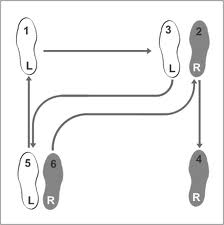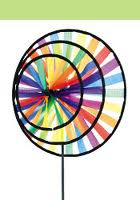The Sunday after Pentecost, this coming Sunday, is known as Trinity Sunday. I used to make fun of Trinity Sunday. Exactly what event are we celebrating? “Oh yes, that’s the day we read our favorite Trinity story!” We all know that on Pentecost, you read Acts 2. On Christmas, Luke 2. For Trinity Sunday, what? The three mysterious visitors to Abraham and Sarah at the oaks of Mamre, (Genesis 18), perhaps?
Back then I viewed the Trinity more as divine minutiae, an arcane embarrassment, the byproduct of underworked and overly-imaginative theologians, a topic one could not discuss for more than thirty seconds without falling into some heresy. If I slip into heresy here, please let me know. 
Now, the Trinity has become for me a mystery to be celebrated, a delightful eccentricity that refuses to be digested by our schemas. Trinity is the very heart of God, and in turn, informs us greatly about what it is to be human.
As my appreciation for the Trinity has increased, I’ve also come to welcome Trinity Sunday. In fact, the trio of Ascension, Pentecost, and Trinity Sunday has become a fun, faint echo of Easter and the Holy Week events. Of course, this relishing of the Trinity is not some solo journey, my great personal revelation. Trinity has been a hot topic in theology for a couple of decades, richly mined by all sorts of good folk.
The Trinity tells us that within the one God there is an eternal and perfect community of love. Even if there had never been a universe for God to love, it still would be correct to say that “God is love” because in the innermost, mystical heart of God there is love between the three persons of the Trinity. God would have never been lonely or bored because of the dynamism and relationships within the life of God.
Although I’m not entirely certain, I believe it was Karl Barth who once said something like, “The Trinity tells us that before there was time or creation, there was love and relationships. And when time is no more, there will still be love and relationships.”
When I teach about the Trinity, we often have an exercise of trying to come up with good symbols, metaphors, and analogies for the Trinity, fully realizing that all analogies will fall woefully short. I tell the class that good Trinitarian images need to convey at least three different things: first, threeness and yet oneness; second, love, relationality, and sharing; third, dynamism, motion, and flow.
Let’s start with some classics—
Patrick’s beloved shamrock: good on three-in-one. Not so great on loving relationships.
Triangle: terribly austere and stark. Hard to catch much love or dynamism.
Here are some of the better or more memorable ideas from discussions and classes over the years—
Waltzing, not the dancers themselves, but the dance. Three steps, moving, flowing, sociability, gracious give-and-take.
A beautiful, complex wind ornament: spinning, twisting, rotating in a manner so intricate it is hard to know exactly how it holds together. The parts pulse and move and reflect light at unexpected angles. Good marks for the vitality and mystery. Less so on the three-in-one and love.
Sound effects: Trinity tells us God sounds more like whir, buzz, zip, zing, not thud, clunk, or plop. It’s trying to convey energy and movement, undoing our impressions of God as a glacial force or a massive slab of granite.
Prepositions: Trinity tells us that God is a God of prepositions. This came from a discussion of Romans 5:1-15, one of the lectionary passages for this coming Sunday. Someone noted how many prepositions are here.
- By faith

- With God
- Through our Lord Jesus
- In whom
- Access to grace
- In which we stand
- Love poured into our hearts
- Through the Holy Spirit.
Prepositions are words that make a connection, juxtaposition, or combination between words. They show a relationship between objects. All these prepositions in the Romans passage help us see that God is not so much a stationary sovereign, an immoveable monarch, rather God is moving, connected, in relationship.
And how do we understand ourselves if God is more like a dance than a boulder? The Trinity tells us that we were created for relationships, to give and take, to share love just as the three persons of the Trinity share love. To be Trinitarian people is to be outward looking people, to be connected, curious, involved, giving and receiving people.
If the Trinity tells us that God is a dancing God, then we are to be dancing people, dancing with God, each other, dancing with prairies and planets, dogs and trout and geraniums.
If God is like a shimmering, twisting, wind ornament, then our lives too are to be spinning in mystical coordination with one another and with God.
If God is a God of prepositions, then we should be prepositional people.
- care for
- despite differences
- abide with
- walk along
- aspire to
- enthusiastic about
- among the poor
- beside one another
- in Christ


I declare that stealing from this for Sunday's sermon is not stealing.
And here I was beating my head against the homiletic wall.
I really appreciated this, Steve.
I had 'pulpit supply' at an area CRC church – and I preached on 'Trinity Sunday,' continuing with a proclamation of the importance of the Spirit, trying to help the hearers understand that Jesus stresses the importance and the good of the Spirit. Thus, we do not need to be afraid of the unpredictable nature of the Spirit and his work in us and the Kingdom.
This is one of those instances where the only words that don't pale in comparison are "Thank you."